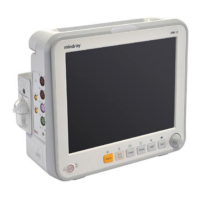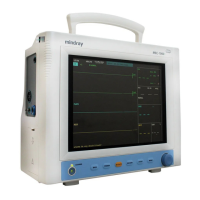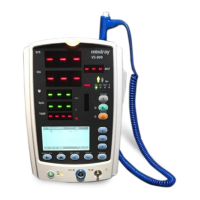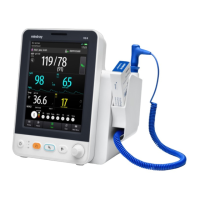14-6
14.6 Measuring PAWP
Pulmonary Artery Wedge Pressure (PAWP) values, used to assess cardiac function, are
affected by fluid status, myocardial contractility, and valve and pulmonary circulation
integrity.
Obtain the measurement by introducing a balloon-tipped pulmonary artery flotation catheter
into the pulmonary artery. When the catheter is in one of the smaller pulmonary arteries, the
inflated balloon occludes the artery allowing the monitor to record changes in the
intrathoracic pressures that occur throughout the respiration cycle.
The pulmonary wedge pressure is the left ventricular end diastolic pressure when the airway
pressure and valve function are normal. The most accurate PAWP values are obtained at the
end of the respiration cycle when the intrathoracic pressure is fairly constant and the artifact
caused by respiration is minimal.
14.6.1 Preparing to Measure PAWP
1. Prepare the same accessories as in the C.O. measurement. Connect the parts such as
catheter, syringe, etc. following the C.O. measurement steps and use the balloon
inflation port.
2. Connect the PAWP cable into the IBP connector on the monitor. Since PAWP is
measured on PA, selecting [PA] as the IBP label is recommended.
3. Select the PA parameter window to enter its setup menu. Then, select [PAWP] to enter
the PAWP measurement window. You can also enter the PAWP measurement window
from the P1-P4 parameter window.

